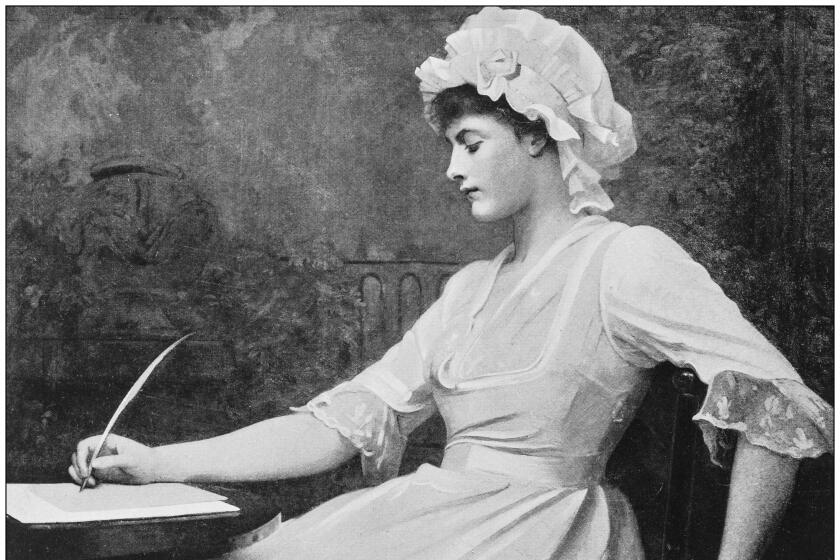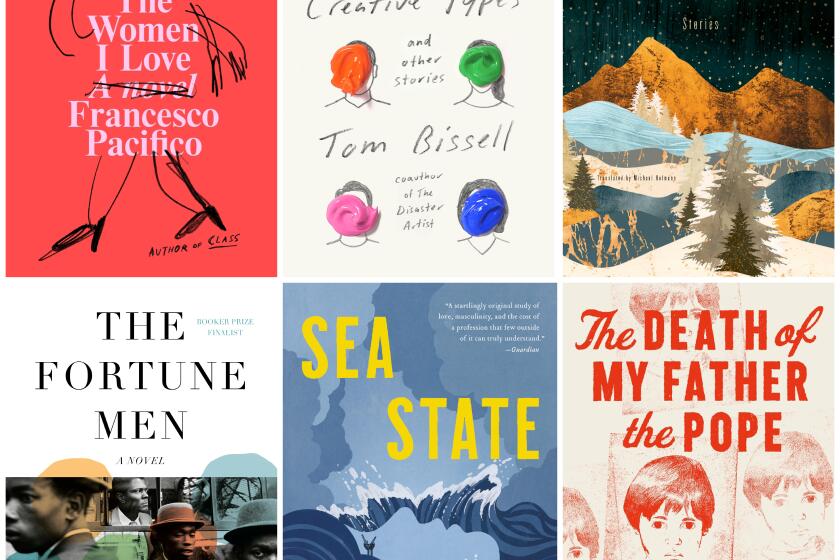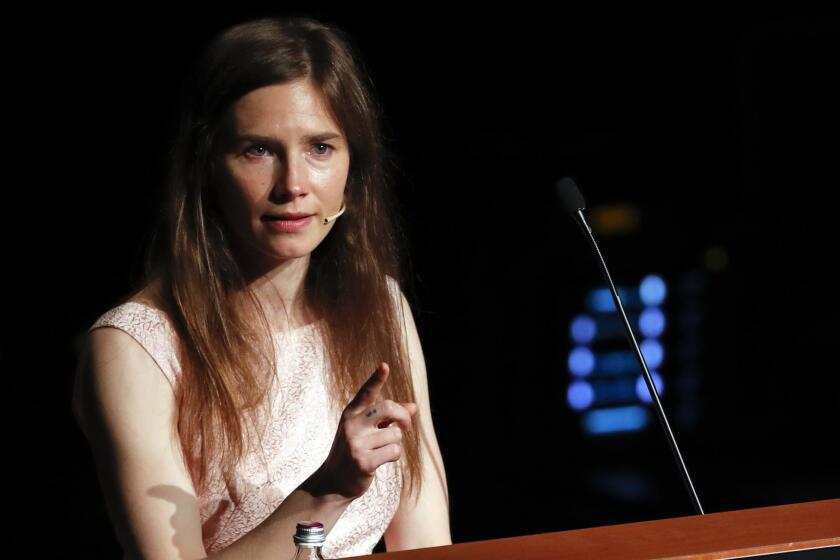A narrator under an artist’s thrall — and a novel under Rachel Cusk’s influence
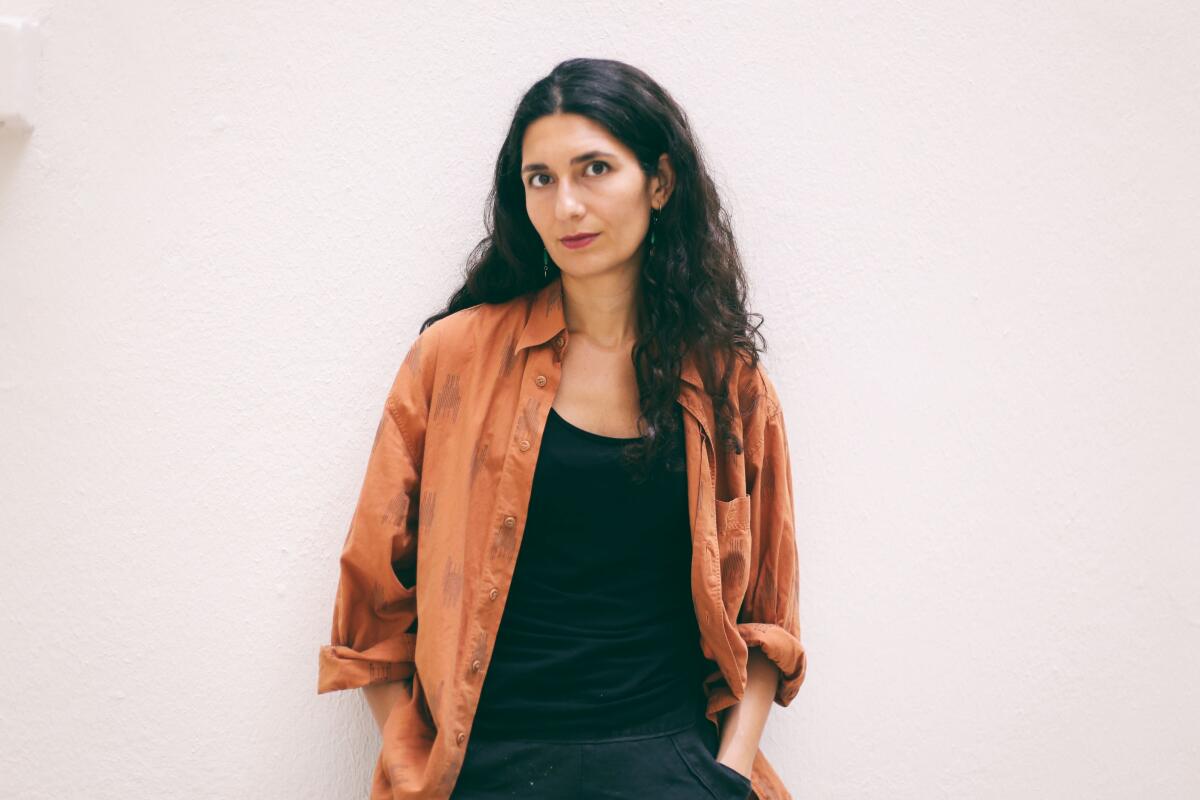
- Share via
On the Shelf
White on White
By Ayşegül Savaş
Riverhead: 192 pages, $26
If you buy books linked on our site, The Times may earn a commission from Bookshop.org, whose fees support independent bookstores.
It’s difficult to read Ayşegül Savaş’ second novel, “White on White,” without thinking of Rachel Cusk’s Outline trilogy. Both authors employ narrators who come across as deceptively submissive, listening while other characters unspool or paint swaths of their lives in vivid detail. Often nameless, these protagonists become receptacles for the experiences of others.
“I think everybody interrogates their structure of self and why it was built the way it was,” Cusk said in a 2020 interview with the Paris Review, “but I think actually to feel imprisoned in the pain of self or the trauma of self, or the fixity of self, is different, and I think that’s what I felt most of my life.” The limits of identity are equally fraught in Savaş’ work; they are the essential building blocks of dramatic tension.
“White on White” is set in an unnamed European city, where an unnamed art history doctoral student rents an apartment while she works on her thesis, studying “Gothic nude sculptures of the twelfth and thirteenth centuries.” The narrator fills her days with research but also spends a lot of time describing the light and the weather and the mood of the city, as well as her flat, where she enjoys the “sparse aesthetic. There was nothing out of place, nothing that called attention to itself in its restrained elegance.”
Novelist Lynn Steger Strong on the revolutionary passivity of Rachel Cusk, Ottessa Moshfegh and Sally Rooney — how we’ve misread them and what comes next.
She feels similarly about one of her landlords, Agnes, a painter who moves into the studio above the apartment. During visits that grow more and more frequent, Agnes regales her in Cuskian manner with stories about her marriage to a medieval studies professor, her adult children, her former au pair, her parents, her cousin, her art. Agnes tells her she’s working on “white paintings of the human figure, with expressions both serene and demented, like those seen in figures from the medieval period, whose naturalism astounded her.” The two are interested in the same era, then, but through different modes; the narrator’s is academic, Agnes’ imaginative.
Again like Cusk, who has called her most recent novel, “Second Place,” an attempt to write a painting, Savaş is alert to tricks of the eye. The narrator draws parallels between the play of subtly contrasting tones around her and her mutable, movable feelings toward Agnes. Nothing is permanent, not even a painting on the bookshelf that becomes a minor fixation. She notices that “the tree in the picture appeared more crooked each day.” And just as the tree’s appearance transforms, so does the narrator’s understanding of Agnes.
The experience of sharing space with this woman old enough to be her mother, becoming more agitated by her presence, begins to feel claustrophobic, all-consuming.
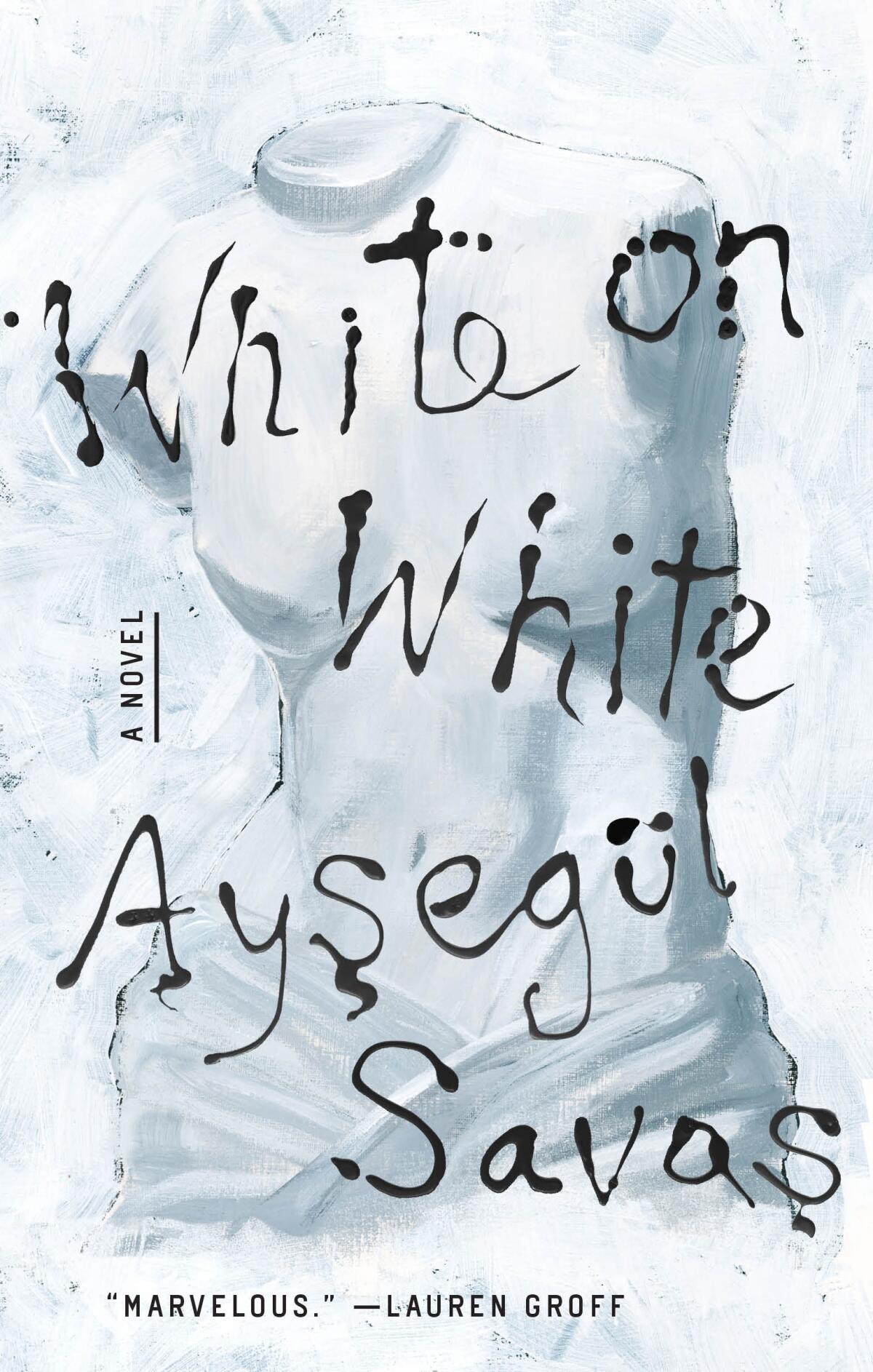
Agnes praises her for being a good listener: “It wasn’t often, she went on, that we could present ourselves to others, like a self-portrait. More often, we made portraits of the people around us, guessing at their features from occasional glimpses.” This foreshadows the disintegration of their relationship; soon Agnes will be chiding her for not being such a good conversationalist after all. Recounting stories of her failing marriage and past friendships, the woman upstairs evinces a habit of looking for mirror images of herself in other people — or for muses who gain little in the bargain.
Before Agnes comes into her life, the narrator wrestles with the difficulty of understanding the medieval perception of the naked body. But during her year with Agnes she comes across a set of letters from a pilgrim that clarifies her argument: “The pilgrim’s description of the nude sculptures was frank and sympathetic, without any squeamishness or avoidance of the subjects’ sex, nor with any hint of judgement towards the fallen bodies.” It’s a topic, then, that wasn’t — as others had argued — always taboo at the time.
A new Lawrence biography, “Burning Man,” by Frances Wilson, and Rachel Cusk’s novel “Second Place” turn the toxic male author into rich material.
Just after making this hard-won discovery, the narrator is forced to learn a deeper truth about Agnes. The painter’s personal life and history become a performance to which she has front-row tickets — as do we. The charismatic woman who seems to be baring all is revealed to be something else entirely: a person who’d “learned to display her femininity and charm, and to hint at them through concealment.” Agnes has not been exposing herself so much as performing feminine exposure.
It’s only when Agnes undresses that persona — in a calculated and tense final scene reminiscent of the imbroglio in the recent piece “Bad Art Friend” — that the narrator can see her. Which is not the same as being able to explain her: “It was the face of an animal, I thought, a creature without human expression, though all the more alive with a meaning I could not decipher.” Agnes distorts and obscures the narrator as well, in a particularly cruel and permanent way.
Is it better to interpret art or to make it? Which is the more constructive act, which the more potentially destructive? Although “White on White” can suffer from too much control at times, Savaş’ restrained style is a statement in itself, minimalist on the surface but more textured than what first meets the eye. Through it, the author questions the validity of the self, whether fully clothed or supposedly exposed. No matter how much one keeps hidden or shares with the world, there’s no controlling what another person will do with that. Humans will likely use the information to their own advantage, in the service of their own twisted judgments. Who knows that better than an artist?
Filgate is a writer and the editor of the anthology “What My Mother and I Don’t Talk About.”
Coming in December: Unsparing memoirs about very messy relationships; globe-spanning new fiction from Nadifa Mohamed, Tom Bissell and others.
More to Read
Sign up for our Book Club newsletter
Get the latest news, events and more from the Los Angeles Times Book Club, and help us get L.A. reading and talking.
You may occasionally receive promotional content from the Los Angeles Times.
